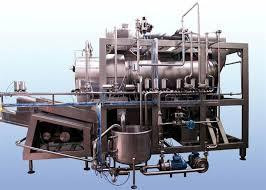When an automated packaging system has been set up, a way of providing containers to the particular system must be used to fulfill performance requirements. While manual labor may be used to position each container mostly on the conveyor belt, in many of the cases such a procedure would actually negate the intent of the automated system itself.
Manually putting each container on the conveyor system would undoubtedly mean however that the filling system, the capping machine and some other machinery would have to wait for the particular bottle loader to somehow catch up, making the effective packing line unreliable. Luckily, there are a range of choices for filling containers on a grid. Bottle loaders are always needed.
Static Bottle Hopper
If a packager needs to use certain manual labor to fill bottles on an automated line, either because of room limitations or for some other logical reason, there are many ways to actually make this job simpler and more effective. A static glass bottle hopper actually allows the bulk bottles to be deposited in a container, and can then be put in or over another conveyor at the basic beginning of the whole packaging system. Bottle unloaders are also very important.
The person filling the bottles will then quickly and otherwise easily take the bottles out of the bin and, if necessary, steer the bottles onto the conveyor. However, this approach also uses manual labor, which ensures that there could be problems that keep up with machines from particular time to time. People also use crate washers.

Loading Turnables
Loading turntables therefore will use the manual labor to consistently deliver the best bottles to the automated packing line, but have a particular advantage over the bottle hoppers. Instead of placing containers directly back onto the total conveyor system, the turntable requires the bottles to be either placed on the basic top of the turntable, which then basically delivers the containers once again to the current main conveyor. The rotary table requires more surface space to fill bottles, whilst the user of the whole bottle hopper can have to wait patiently for the storage containers to pass in order to actually load the next particular group. Centrifuges are also good.
Turntables may also be designed and manufactured with another loading table, allowing the manual labor to open or position containers.The extra particular surface space will also cause these loading bottles to travel ahead of the unit, which ensures that additional activities can be introduced, such as loading bulking closures into further the cap distribution system or adjusting label rolls to maintain the automated line running smoothly. Churns are also reliable.
Landing Conveyors
Another way of filling containers with human labor is the loading or otherwise loading of the whole conveyor. This system consists of basically a loading table that leads to a somewhat loading conveyor. The lancing conveyor lines up the bottles or some other containers in straight rows to be then delivered onto the main conveyor system. Once again, operators can be able to step ahead of the machines in order to support the whole packing line in some respects, as indicated above.




